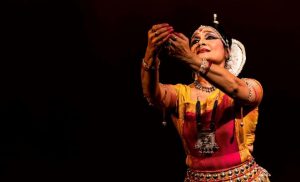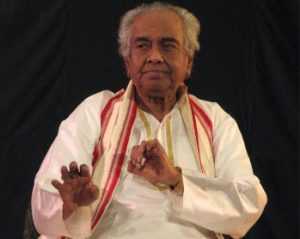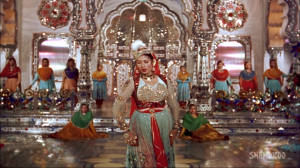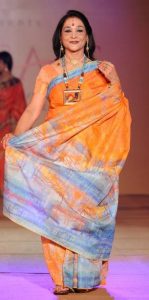Actors, filmmakers have no time for classical dance today
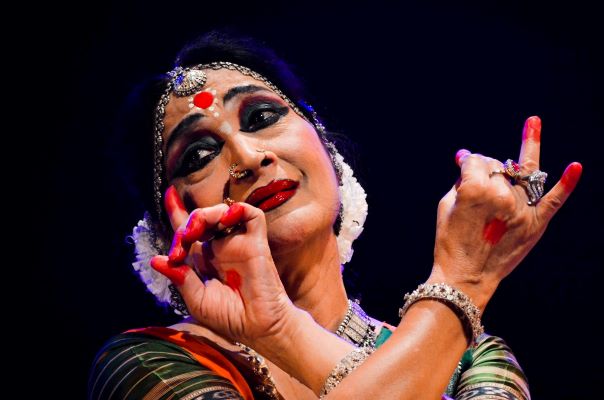
World-renowned Odissi dancer Padma Shri RANJANA GAUHAR started dancing at the age of five. Due to extensive training in Kathak, Manipuri and Chhau apart from Odissi, her performances have a very unique style. In an interview with Saurabh Tankha, one of the foremost exponents in the world of Indian classical dance talks about the motivation behind choosing Odissi over Kathak, her first guru and why classical dances don’t find place in movies today
When was the first time that you felt the urge to express yourself through dancing?
As a child, I always cherished and desired to be like a bird, dancing on the branches of trees and enjoying the freedom of soaring into the skies. It must have been a spiritual quest for freedom. I heard music in everything around me and could sense the rhythms of Nature through my body. There was an irresistible urge within me to let my restless spirit to be in harmony with Nature. To use the rhythm in my soul, to translate it into movement, I simply felt I had to dance. I have been dancing from the age of five to the beautiful harmonium playing of my father. Although a businessman by profession, he was very fond of poetry which he used to write himself in Urdu and Persian. He was fond of singing too. Every Sunday, he sat down with all the children in the family, played the harmonium and entertained us with his singing and invariably, I started dancing. He noticed that interest and put me for Kathak training in a nearby school of dance. That was how it all began.
What was the motivation behind choosing Odissi?
When I saw this dance form for the first time, the sheer beauty of the art became my motivation to learn Odissi. Its aesthetics, its lyrical and sculpture like graceful movements, the divine and soulful music full of devotional flavour, the pristine quality, purity and antiquity – all these qualities attracted me deeply towards this dance form. It was like my inner calling. I felt I simply had to connect with it and that it was the sole reason for my being alive. I was passionately obsessed with this art and it became the driving force for me. The more I did it and the more I saw it, the more I was inspired and felt the need to pursue it.
The sheer beauty of the art became my motivation to learn Odissi. Its aesthetics, lyrical and sculpture like graceful movements and the divine and soulful music full of devotional flavour
What was the reaction back home when you told them you wanted to be a professional dancer?
They were not happy about me taking up dance as a serious activity. Even my artistically inclined father felt it was a foolish idea that I was harbouring in my heart and head. But slowly and gradually as they watched me pursue Odissi dance, which I started learning only after my graduation, with great devotion, honesty and singlemindedness, they gave in to this pursuit of mine. I used to practice anywhere between eight to nine hours a day: learning, practicing and constantly reminding myself about this art. I moved from different jobs of teaching for four years as I wanted to be financially independent. So from day one, this beautiful art taught me to be self-reliant and financially independent.
Your first guru and life during the training of Odissi…
I must honestly acknowledge that I feel privileged to have learnt this art from the legendary guru Mayadhar Raut and also partially from his senior disciple, Aloka Panicker. I have some interesting memories, especially with guruji. He used to be amazed to see my huge appetite to learn Odissi dance. I could learn it for hours. I never missed any class where he allowed me to be present. This was apart from my own special time that I pushed him to give me. I joined in all the general classes or any practice sessions going on. I never got tired dancing and never wanted to leave his teaching classes. I was so possessed in my pursuit that I wanted to stay on. Even during lunch hours, between one and four, the classrooms were locked by gurus and students used to leave. I didn’t.
My legendary guru Mayadhar Raut used to be amazed to see my huge appetite to learn Odissi dance. I could learn it for hours. I never missed any class where he allowed me to be present
There were two reasons behind this: one, both Shriram Bharatiya Kala Kendra (SBKK) at Mandi House and Hauz Khas’ Jagannath Temple (where guruji taught) were at a distance from where I stayed. And two, because I wanted to practice and read theories. During the SBKK days, I told guruji to lock me inside for the three hours and assured him that I won’t make any noise or let anyone know that I am inside. I would silently practice the art which he taught me with so much love. He thought I was mad and crazy. Those were fun days where I could allow myself the junoon in which an artiste must live. Being obsessed and being possessed by the art is something that happens naturally to me. Today, when I tell these stories to my students, we all laugh together. They find it difficult to believe that I was such an obstinate person.
You once said in an interview that an artiste introduces you to yourself. Please elaborate.
Dance is not only the journey of the process of learning the art but also the inner journey of an artiste. The art touches our soul awakening our consciousness and making us more vibrant, more alive human beings. It brings self-awareness, creates connection with one’s own self. From my personal experience, I can say that the one thing that stood by me in all my highs and lows is the art of dance. Even when everyone looked the other way, I could turn towards my dance and find peace, solace and happiness. It has always uplifted my spirits. When you perform as an artiste and communicate through your dance, you reveal your inner being that vibrates in the hearts of your viewers. Whatever you perform, it definitely vibrates with your viewers. They too experience the emotions the artiste depicts and begin to connect and relate with the art and the artiste. That exactly is the purpose of the art: communication. And that’s how you realise who you are through your art.
Why is it that we see all types of dance forms in movies these days but shy away from classical dances, something seen during the 50s, 60s and to an extent in the 70s?
The youth is more drawn towards Western music and dance today. They don’t have much knowledge, awareness and interest in Indian classical dance so filmmakers don’t find it a tempting option to use classical dance in their movies. Also, to perform classical dance, one is required to do rigorous practice and invest time which neither the filmmakers nor the actors have today. I had read somewhere that yesteryear actor Madhubala, who was not a trained dancer, learnt Kathak from Lachchu Maharaj for one year to do two dance sequences in Mughal-E-Azam.
Yesteryear actor Madhubala, who was not a trained dancer, learnt Kathak from Lachchu Maharaj for a year to do two dance sequences in Mughal-E-Azam. Who will do this today?
Now, which actor will do this today and where do they have the time? Though if you look at the history of the films, there were some like Jhanak Jhanak Payal Baje, Amrapali, Guide which were made with classical dance as the base and did well at box office. Today, nobody has the patience. Film viewers are moving away from the real thing. They don’t want to see reality. The taste is changing so drastically.
Geet Govindam, it seems, has played a major role in your life…
It has. The one moment I can never forget where I felt sheer bliss in the art of Odissi dance. I felt deeply blessed at that moment and that was when I learnt about Geet Govindam, about the divine love of Radha and Krishna which was written in Sanskrit by saint poet Jayadeva in the 12th century. My soul was deeply stirred and tears rolled down my eyes when I first read it. The poetry is so beautiful and moving. Till date, I feel it is the best poetry I have ever learnt or read in Sanskrit. Also some unusual thought processes and concepts came to me through this poem as the treatment is so very different. It is so full of devotion that it stirs me every time I do an ashtapadi. I relive the moment when I heard it for the first time. I get so moved due to the intense love, then the separation and thereafter, the reunion of Radha and Krishna as atma and parmatma. It is deeply touching. Learning Geet Govindam became one of the moments which I will never forget all my life.
I like to watch movies but I rarely complete one. Usually, I leave them unfinished because I find they do not make much sense. Some which do, I watch
What is Ranjana Gauhar doing when she is not dancing?
When Ranjana is not dancing, she wants to be amid Nature. I walk my dog in Lodi Garden every day and play with him. I am very fond of reading and spend time meditating too. I do exercises and pranayama in the mornings. Sometimes, I like to watch movies but I rarely complete one. Usually, I leave them unfinished because I find they do not make much sense. Some which do, I watch. I spend time with my students too. Due to Covid-19, numbers are less but then there are online classes. In a week, I take 12 classes. I also keep planning new projects. During the lockdown, I did two major festivals and am planning for one more soon. Churning of new ideas, researching, reading goes on all the time. It makes life interesting, exciting and happening. That’s how time passes.
Introduce us to your life: parents, education, siblings…
My mom was a housewife and father a businessman. We were not a family of artist(e)s but just for happy moments, my father would play the harmonium and would sing. I studied in Delhi where I was born. I went to Lady Irwin School and then Lady Shriram College from where I first did graduation and then my Masters. We were three girls in the family and one boy. I am the youngest.
A word for our readers…
To be creative means to be in love with life. You can be creative only love life enough that you want to enhance its beauty. You want to bring a little more music to it. A little more poetry to it and a little more dance to it. Because the most beautiful people we have known are those who have known defeat, suffering, struggle and loss and yet found their way out. Such persons have an appreciation, sensitivity and understanding of life that fills them with compassion, gentleness and loving concern. Beautiful people don’t just happen.


